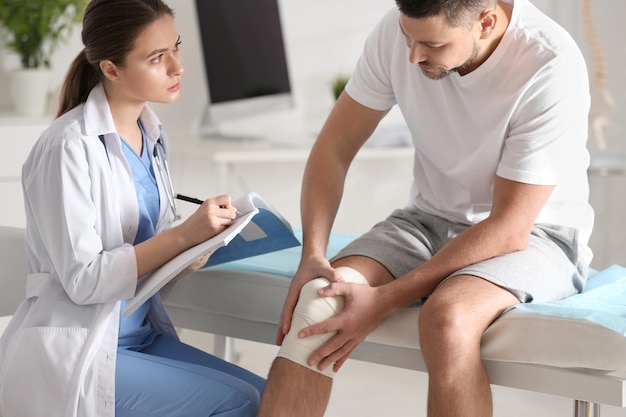Knee pain is a common issue that affects people of all ages and lifestyles. It can stem from various causes, including injuries, arthritis, and other underlying health conditions. As the population continues to age, the prevalence of knee pain is increasing, leading to a surge in demand for effective Knee Pain Treatment in Dubai. Fortunately, advancements in medical technology and treatment methods are providing new hope for those suffering from knee discomfort.
Innovative Surgical Procedures for Knee Pain Relief
One of the most significant advances in knee pain treatment is the development of minimally invasive surgical techniques. These procedures often require smaller incisions, resulting in less tissue damage, reduced pain, and quicker recovery times. For instance, arthroscopy allows surgeons to visualize and treat interior knee issues using a small camera and specialized instruments. This technique has become increasingly popular for addressing meniscus tears, cartilage damage, and ligament repairs.
Robotic-assisted surgery is another groundbreaking development. This technology enhances the surgeon's precision during knee procedures, leading to better outcomes and faster rehabilitation. By personalizing knee replacement surgery based on a patient's unique anatomy, robotic systems allow for improved alignment and function of the implanted joint, which can significantly enhance mobility and quality of life post-surgery.
Emerging Non-Surgical Treatments for Knee Pain
While surgery remains a viable option for many, a growing array of non-surgical treatments is also evolving. One such method is regenerative medicine, which includes techniques like platelet-rich plasma (PRP) therapy and stem cell therapy. PRP therapy uses a patient’s own blood, concentrating the platelets and injecting them into the affected joint to promote healing and reduce inflammation. Stem cell therapy aims to harness the body’s natural repair mechanisms to regenerate damaged tissues within the knee. These treatments, while still being researched, show promising results in alleviating knee pain and enhancing recovery.
Another exciting advancement in knee pain management involves the use of injectable therapies. Hyaluronic acid injections, commonly known as viscosupplementation, aim to restore lubrication and cushioning in the knee joint, which can be particularly beneficial for individuals with osteoarthritis. This treatment option helps improve mobility and reduce pain for those affected, providing relief without the need for invasive procedures.
Pain Management Techniques That Show Promise
In addition to surgical and injection-based treatments, advances in pain management techniques are gaining traction. Interventional pain management encompasses a range of procedures designed to directly alleviate pain without full surgical intervention. Techniques such as nerve blocks and epidural injections can provide substantial relief for knee pain by targeting specific sources of discomfort.
Furthermore, advancements in neuromodulation therapies, including spinal cord stimulation, offer new avenues for those with chronic knee pain. This method involves delivering electrical impulses to the spinal cord to disrupt pain signals before they reach the brain, thereby reducing the perception of pain. These therapies continually evolve, incorporating new technologies that increase effectiveness with fewer side effects.
The Role of Physical Rehabilitation in Recovery
Rehabilitation plays a crucial role in the overall treatment of knee pain. With the latest advances in technology, physical therapy has become more personalized and effective. Utilizing techniques such as sports medicine assessments, therapists can create customized rehabilitation programs that address an individual's specific needs, helping to restore joint function and strength.
Additionally, advancements in virtual physical therapy and telehealth enable patients to receive expert guidance from the comfort of their homes. Digital platforms allow for remote assessments and personalized exercises, making rehabilitation more accessible and convenient, which is especially beneficial for those with mobility challenges.
Wearable Technology in Knee Pain Monitoring
Wearable technology has taken health monitoring to a new level, and its application in knee pain treatment is remarkable. Devices such as smartwatches and specialized sensors can track physical activity, muscle strain, and even joint health. These tools allow patients and healthcare providers to monitor progress in real-time, making it easier to adjust treatment plans as needed.
Smart wearables can also analyze movement patterns, providing insights into how a patient’s gait may contribute to knee pain. By identifying irregularities early, interventions can be implemented to prevent further complications and improve overall function.
The Importance of Multidisciplinary Approaches
As the landscape of knee pain treatment continues to evolve, a multidisciplinary approach to management is proving beneficial. This model brings together various healthcare professionals, including orthopedic surgeons, physical therapists, pain specialists, and rehabilitation experts, all working collaboratively to create comprehensive treatment plans.
Such collaboration ensures that patients receive well-rounded care, addressing not only the physical aspects of knee pain but also the psychological and emotional challenges. By understanding the complex nature of pain, healthcare providers can offer a more holistic treatment approach that ultimately leads to better outcomes for patients.
Future Directions in Knee Pain Treatment Research
Ongoing research is essential for advancing knee pain treatment options further. Researchers are exploring new biomaterials for joint replacements, improving surgical techniques, and developing more effective non-surgical interventions. Stem cell research continues to evolve, with studies focusing on optimizing methods to enhance healing capacity and reduce inflammation in knee joints.
In addition, there is an increasing emphasis on patient-centered care, which prioritizes individual preferences and values in treatment decisions. As healthcare becomes more personalized, patients are likely to have better experiences and outcomes.
Conclusion: A Promising Horizon for Knee Pain Sufferers
The landscape of knee pain treatment has transformed dramatically in recent years, bringing forth a myriad of innovative approaches that improve patient care and outcomes. With advances in surgical techniques, non-invasive therapies, pain management solutions, and rehabilitation innovations, those suffering from knee pain now have access to more effective and personaliz





Comments